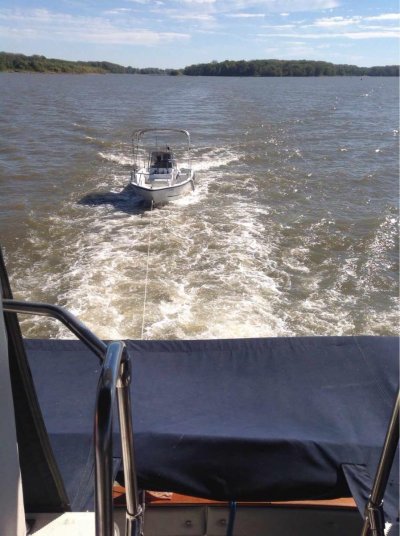cardude01
Guru
- Joined
- Nov 26, 2012
- Messages
- 5,290
- Location
- USA
- Vessel Name
- Bijou
- Vessel Make
- 2008 Island Packet PY/SP
I know some here on TF tow fairly big boats as tenders from time to time. My dad is in his mid 80s and he has given up on using his older 1990 vintage Triton 17' bay boat, so he gave it to me to do whatever with. It has a 115 Hp 2 stroke Yamaha on it that's pretty troublesome. Hard to start, noisy, not very reliable.
The boat itself seems to be in decent shape however, so I was wondering about sticking a newish 4 stroke, smaller engine on it in the 70-90hp range and using it as a tow behind tender if I ever got towards the Bahamas. I'm just not sure how much that would drag down my fairly lightly powered (100 HP Yanmar) cruiser. Seems like a lot of boat to tow but I know others do it, but maybe with bigger boats than mine.
What say you? Is it worth the effort and money, or should I go onto the next idea?
It looks about like this

The boat itself seems to be in decent shape however, so I was wondering about sticking a newish 4 stroke, smaller engine on it in the 70-90hp range and using it as a tow behind tender if I ever got towards the Bahamas. I'm just not sure how much that would drag down my fairly lightly powered (100 HP Yanmar) cruiser. Seems like a lot of boat to tow but I know others do it, but maybe with bigger boats than mine.
What say you? Is it worth the effort and money, or should I go onto the next idea?
It looks about like this







